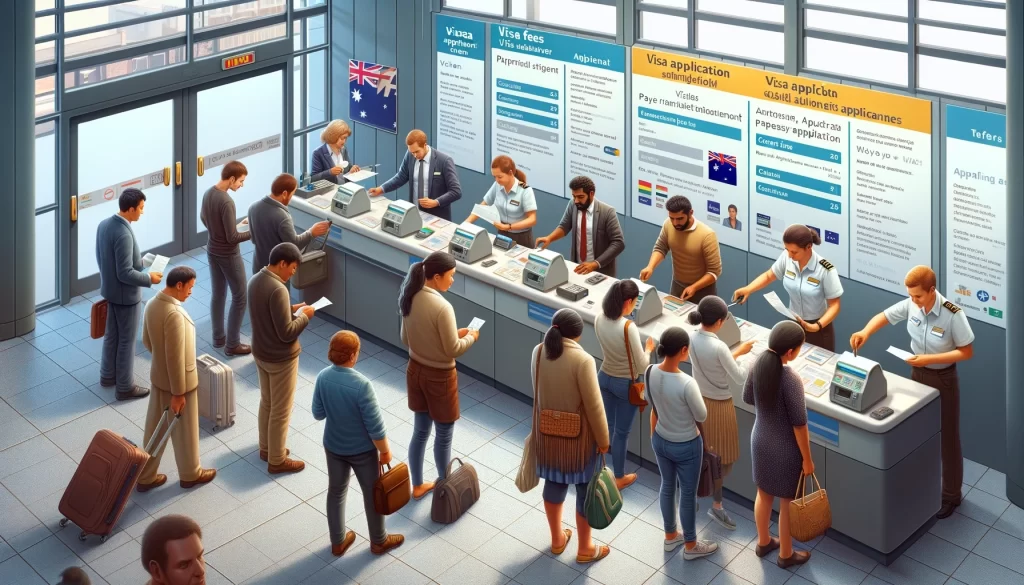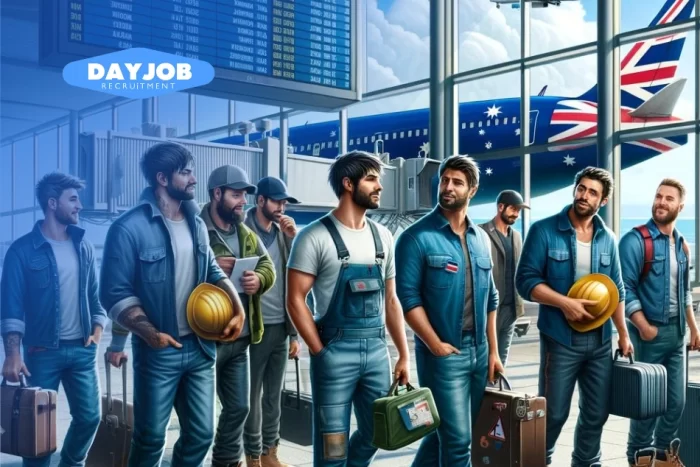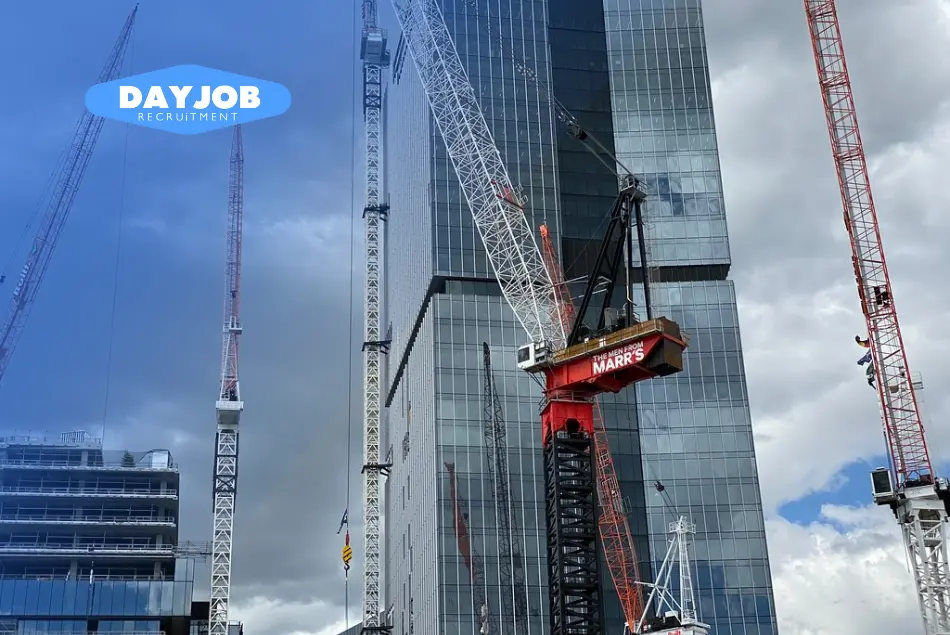Australia, renowned for its unique landscapes, diverse wildlife, and vibrant cities, has long been a sought-after destination for migrants. From its robust economy to the promise of a high-quality lifestyle, it attracts individuals worldwide.
If you’re contemplating making this leap, understanding the numerous visa options and migration pathways is crucial.
With this guide, we aim to simplify the complexities of the Australian migration process, offering insights, tips, and resources to assist you in your journey. Whether you’re considering moving for work, education, or simply a change of scenery, Australia presents a world of opportunities.
When planning to migrate to Australia, it’s essential to familiarize yourself with the various visa options available. You can start by answering the following questions:
- Purpose: Why do you want to migrate to Australia? Is it for work, family, education, or other reasons?
- Visa Type: Which Australian visa subclass is most suitable for your situation? Are you looking at skilled migration, family visas, student visas, Working Holiday visas, or another category? You may use this visa finder tool provided by the Australian Government.
- Duration: How long do you plan to stay in Australia? Is it a temporary stay, or are you looking to become a permanent resident?
- Eligibility: Do you meet the criteria for the Australian visa type you’re considering? This includes age, skills, qualifications, and other specific requirements.
- Location: Which state or territory in Australia are you considering? Do you have a preference, or are you open to living anywhere in the country?
- Financial Planning: Have you considered the costs associated with migrating, including Australian visa application charge, relocation expenses, and initial living costs?
- Qualifications: Will your qualifications and professional experience be recognized in Australia? Do you need to undergo skills assessments or further training?
- Health & Character: Are you aware of the health and character requirements for Australian visas?
- Support System: Do you have friends or family members in Australia who can assist during the initial phase of your migration?
Once you’ve answered these questions, you should have a clear overview of your goals.
So, let’s dive in and explore your options to migrate to Australia. We’ll focus on Visitor visas (including visas 417 & 462 – options for backpackers), Student visa (Subclass 500), and Work visas for temporary and permanent stays.
Visitor Visa
Image Source: Thai Embassy
Predominantly designed for individuals intending to travel to Australia for leisure, tourism, or familial visits. Additionally, the visitor visa caters to those engaging in specific short-term business opportunities, provided they don’t involve employment within the country.
The most popular Australian visas amongst young travelers are Working Holiday Visa (Visa Subclass 417) and Work & Holiday Visa (Visa Subclass 462).
The Working Holiday program allows young individuals, typically between 18 and 30 (up to 35 for certain nations), to travel and work in Australia. For many young travellers, this is the easiest way to arrive in Australia and fund the year abroad by working in regional areas. You may read about the visa application process from the Australian Immigration website.
Backpackers can stay in Australia for up to 12 months and renew the visa twice, allowing them to remain in the country for a maximum of 3 years. Visa holders are also allowed to study for up to 4 months.
Working Holiday Visa 417
Applicants must hold a passport from one of the following countries: Belgium, Canada, Republic of Cyprus, Denmark, Estonia, Finland, France, Germany, Hong Kong Special Administrative Region of the People’s Republic of China, Republic of Ireland, Italy, Japan, Republic of Korea, Malta, Netherlands, Norway, Sweden, Taiwan, or the United Kingdom.
To apply for your second or third-year WHV visa, you must work in a regional area in one of the following sectors.
- plant and animal cultivation in regional Australia
- tourism and hospitality in NT, or very remote Australia
- fishing and pearling
- tree farming and felling
- mining
- construction (in regional Australia)
- bushfire recovery work
- flood recovery work
- critical COVID-19 work in the healthcare and medical sectors anywhere in Australia
Before applying for jobs, ensure it’s located in a regional, remote, or very remote area. You can see the list here: Australian immigration website.
Working Holiday Visa 462
Officially called Work & Holiday Visa ( Visa Subclass 462) is for applicants from the following countries: Argentina, Austria, Brazil, Chile, People’s Republic of China, Czech Republic, Ecuador, Greece, Hungary, Indonesia, Israel, Luxembourg, Malaysia, Mongolia, Papua New Guinea, Peru, Poland, Portugal, San Marino, Singapore, Slovak Republic, Slovenia, Spain, Switzerland, Thailand, Turkey, Uruguay, United States of America, or Vietnam.
UPDATE! Starting from 2024, Working Holiday Maker visas will be granted annually to 200 Filipinos between the ages of 18 and 30.
The following industries qualify for specified work:
- tourism and hospitality in the NT, or very remote Australia
- plant and animal cultivation in NT and other specified areas
- fishing and pearling in the NT only
- tree farming and felling in the NT only
- construction in NT and other specified areas
- bushfire recovery work
- flood recovery work
- critical COVID-19 work in the healthcare and medical sectors anywhere in Australia after the 31st of January 2020.
Again, make sure that the applied job is located in a rural area.
Visa Application Fees and Processing Times for Visa 417 and 462:
The fee for both 417 and 462 visas is 635.00 Australian Dollars (AUD). At the time of writing, 90% of applications for visa subclass 417 are processed in 16 days. For visa subclass 462, the processing time is longer; 90% of visas receive a response within 41 days.
You may use this tool to see the average Australian visa processing times. Applying for these visas is simple and does not require the help of a registered migration agent.
Work Limitations:
You are allowed to work for one employer for up to six months. If you wish to apply for a second-year visa during your initial year of stay, you must complete 3 months or 88 days of work in a regional area. Backpackers commonly refer to this requirement as “completing my farm days”.
To apply for a third-year visa, you must have completed 6 months of work in a designed area and sector.
Australian Visa Application Process
You may use a registered migration agent, but it’s unnecessary when applying for the 417 or 462 visas. The application form is straightforward and can be completed here. As a first step, you are required to create an ImmiAccount.
Student Visa Subclass 500
Designed for international students, visa subclass 500 allows full-time studies at a recognized Australian institution. Applicants can apply online and can be located overseas. Once granted, the visa enables students to stay in Australia for up to five years. Your family member can apply for a partner visa.
How To Apply For Australian Student Visa

Applying for a student visa in Australia can be streamlined with the assistance of a registered migration agent, which is often the most straightforward approach. Start by contacting a registered migration agent and enrol in a course at an Australian institution registered on the Commonwealth Register of Institutions and Courses for Overseas Students (CRICOS).
Upon receiving the Confirmation of Enrollment (CoE), a registered migration agent can guide you through submitting the Visa Subclass 500 application on the Australian Department of Home Affairs’ ImmiAccount system.
Australian Student Visa 500 Working Hours
From the 1st of July 2023, students can work up to 48 hours every two weeks. Partner Visa holders have the same limit of 48 hours over the same two-week period.
You may read more about student visa working hours here. There are no work restrictions when the study is not in session.
You can enroll in the following courses:
- Vocational courses (Business, Marketing, Tourism, Project Management, Sport & Fitness, Hospitality and others)
- English courses (General English, IELTS, Cambridge, and others)
- University courses (Bachelor’s, Master and PhD).
Student Visa is an excellent option for all migrants whose main goal is to study but also work and explore Australian diverse culture.
Student Visa Processing Time:
Processing times for student visa applications vary, but they are often processed within 60 days. Before filling in the application form, it’s essential to consider the following fees:
- Application fee: starting from 710 AUD
- Tuition Fees: Depending on the institution and the course, tuition fees can vary widely. Universities, vocational education institutions, and English language schools all have different fee structures.
- Overseas Student Health Cover (OSHC): health insurance is mandatory. The costs will depend on the duration of your stay and the level of coverage you choose.
- Migration Agent fees: Often, migration agents do not charge students directly, as they receive a fee from the educational institutions. A qualified Migration Agent can help you prepare documents and offer consultation to ensure a successful visa application.
- English Language Tests: If you’re required to prove your proficiency in English, you might need to take tests like IELTS, TOEFL, or PTE, which come with their own fees.
- Police Checks & Medical Examinations: These may be required for your visa application process.
Some other important points to consider:
- Course Requirement: To qualify for a Student Visa, you must be enrolled in a course of study in Australia. This course should be registered on the Commonwealth Register of Institutions and Courses for Overseas Students (CRICOS).
- Guardianship: If you are under 18, you may need a legal guardian in Australia. This guardian can be a relative or can be arranged through the school you will attend.
- Attendance: You are required to maintain adequate course progress and attendance.
- Changing Courses: If you want to change courses, you might need to apply for a new student visa or fulfil certain conditions.
- Post-Study Work Rights: Upon completing your studies, you may be eligible for the Post Graduate visa (Post-Study Work Visa), allowing you to stay in Australia and work post-studies. This visa is relatively inexpensive compared to a Student visa, and doesn’t come with many limitations.
- Financial Capacity: You may be required to provide evidence of sufficient funds to cover tuition fees, living costs, and travel expenses for the duration of the stay.
Australian Skilled and Work Visas

There are several visa options for skilled migrants to choose from. Skilled migration plays a significant role in the Australian economy, and thousands of people migrate to Australia each year using one of the options listed below. Under certain conditions, these work visas offer a pathway for skilled workers to migrate to Australia permanently.
Skilled Regional Visa 491
Skilled work regional visa subclass 491 is designed for skilled workers who want to live and work in regional Australia. The 491 visa aims to address skills shortages in regional parts of Australia and encourage migrants to settle in areas outside of major cities. The “Skills Occupation List” (SOL) offers a clear pathway to Australian shores. This list is an essential part of Australia’s point-based system for skilled migration and plays a pivotal role in deciding who gets to live and work in Australia.
491 Visa Requirements:
- Your occupation must be on the eligible skilled occupation list.
- Applicants must be under 45 years of age.
- Be nominated by a state or territory government agency in Australia or show that an eligible family member will sponsor you.
- Submit an expression of interest (EOI) to the Immigration Department to receive an evaluation of your points score.
- Have a valid skills assessment.
To see all requirements, visit the Australian Immigration website.
491 Visa Duration:
5 years, and you may apply for permanent residency after 3 years post visa grant.
491 Visa Fees:
Visa cost: Starting from AUD 4,640.00.
Migration agency cost for visa 491: We recommend working with a registered migration agent or migration lawyer. It will add to the cost but save you the headache as the process can be complex. Each migration agent sets their own fees, so consider contacting multiple agents to get the best offer. Often, migration agents in rural areas charge less. Ensure the migration agency is registered with the Office of the Migration Agents Registration Authority (MARA).
Skill Assessment Fee: Before you apply for the 491 visa, you need a skills assessment to verify that your skills and qualifications match Australian standards for your nominated occupation. The fee for this assessment varies depending on the assessing authority and occupation. VETASSESS skills assessment has 20 locations globally, including the Philippines, India, the UK, and Australia.
English Language Tests fees: If you need to provide evidence of your English proficiency, you’ll incur fees for taking an English language test (e.g., IELTS, PTE, OET).
Health Examinations fees: A visa holder is typically required to undergo health examinations. The cost can vary depending on the type of examination and where it’s conducted.
Police Checks: To meet the character requirement, you and all members of your application aged 16 or older must provide a police certificate from every country each of you has lived in for 12 months or more during the past 10 years. Fees vary depending on the country and issuing authority.
491 Visa Processing Times
For indicative processing times, refer to the visa processing time guide tool. This provides data on recent application processing durations. Please note it serves as a general guide.
Skilled Nominated Visa (Visa Subclass 190):
This visa requires nomination by an Australian state or territory based on the applicant’s occupation and other criteria, but not by an eligible family member or an employer.
Key points:
- Permanent visa, which allows you to stay in Australia indefinitely.
- You may work and study anywhere in Australia.
- You can sponsor eligible relatives for permanent residency.
- Pathway to Australian citizenship.
- Visa cost: Starting from AUD4,640.00.
To see all requirements, visit the Australian Immigration website.
190 Visa Processing Times:
For a general sense of processing durations, use the visa processing time guide tool on the official website.
Differences between Visa Subclass 491 and 190
The main differences between the Skilled Work Regional (Provisional) Visa (Subclass 491) and the Skilled Nominated Visa (Subclass 190) revolve around their intent, geographical conditions, and routes to permanent residency. We’ve listed the main differences below:
- Intent and Location:
- 491 Visa: It’s designed for skilled workers who want to live and work in regional Australia. Applicants must either be nominated by an Australian state or territory government agency or be sponsored by an eligible family member living in a designated regional area.
- 190 Visa: It’s for skilled workers who have been nominated by an Australian state or territory government agency (not necessarily regional). This visa allows the holder to live and work anywhere in the nominating state or territory.
- Pathway to Permanent Residency:
- 491 Visa: It is a provisional visa valid for 5 years. Holders can be eligible for permanent residency through the Permanent Residence (Skilled Regional) visa (subclass 191) after living, working, or studying in the designated regional area for at least 3 years and meeting certain other criteria.
- 190 Visa: It is a permanent visa from the outset. Once granted, the holder can live, work, and study in Australia indefinitely.
- Sponsorship or Nomination:
- 491 Visa: Applicants can be sponsored by an eligible relative living in a designated regional area or be nominated by a state or territory government agency.
- 190 Visa: Applicants must be nominated by a state or territory government agency, but there’s no provision for relative sponsorship.
Temporary Skill Shortage (TSS) Visa (Visa Subclass 482):
The Temporary Skill Shortage (TSS) Visa (Subclass 482) allows Australian employers to address labour shortages by sponsoring qualified overseas workers for temporary employment. This visa is divided into three streams:
- Short-Term Stream: This is for employers who need to fill skill gaps with foreign workers on a temporary basis, where the required skillset might not be available locally. Visa holders under this stream can stay in Australia for up to 2 years.
- Medium-Term Stream: This stream targets more specialized occupations based on the Medium and Long-term Strategic Skills List (MLTSSL). Visa holders under this category can stay in Australia for up to 4 years, with the possibility of transitioning to permanent residency.
- Labour Agreement Stream: This stream allows approved employers to sponsor overseas workers according to the terms of a labour agreement. It’s tailored to employers who have a negotiated labour agreement with the Australian Government.
The TSS visa prioritizes Australian workers. Employers must demonstrate they’ve made genuine efforts to hire Australians first and that there’s a genuine temporary need for an overseas worker. Additionally, the visa holders must meet specific requirements, including skills, qualifications, and English language proficiency.
This visa serves as a solution for businesses that need to sponsor adept international professionals due to a shortage of qualified Australian citizens or permanent residents for specific skilled occupations.

Visa Charges:
Visa 482 involves financial commitments for the sponsoring employers and the prospective employees. Employers have to cover the fees associated with sponsorship and nomination, while employees are responsible for their visa application charges.
For every additional year beyond the initial visa grant, extra costs are involved, which both parties should be aware of and prepare for in advance.
Skills Assessment:
A crucial component of the TSS visa application process is the skills assessment. This assessment verifies that the visa applicant’s qualifications and work experience align with Australian standards for their nominated occupation.
What is the Skills Occupation List (SOL)?
The SOL is a compilation of professions and trades in demand in Australia. It’s regularly updated based on the country’s evolving workforce needs. If your profession is on this list, it signifies that there’s a shortage of your skills in Australia, increasing your chances of successful migration.
Why is the SOL Important for Filipinos?
The Philippines, known for its robust education system and English-speaking population, has been a significant source of skilled labour for Australia. The SOL allows Filipinos to leverage their skills, qualifications, and work experience to migrate to Australia, opening doors to competitive salaries, advanced professional training, and a higher standard of living.
Key Occupations for Filipinos
While the SOL encompasses a wide range of professions, certain occupations are particularly relevant for Filipinos, given the expertise and training available in the Philippines:
- Nurses and Healthcare Professionals: With world-class medical training facilities, the Philippines is a leading exporter of nurses and healthcare professionals. Australia, with an aging population, has a growing demand for healthcare services, making this profession a top contender on the SOL.
- Engineers: Filipino engineers, especially in the civil, mechanical, and electrical domains, have greatly succeeded in Australia due to their rigorous training and adaptability.
- IT Professionals: As the tech industry in Australia continues to boom, IT professionals, software developers, and system analysts from the Philippines can find lucrative opportunities.
- Teachers: English teachers, in particular, have been in demand, given the Philippines’ English proficiency.
- Tradespeople: Electricians, plumbers, and construction workers from the Philippines have been steadily making their mark in Australia, thanks to the ongoing construction boom.
Are you a job seeker looking for your next big opportunity? Click below to see how we can assist you in finding the perfect role.
Conclusion
Australia offers diverse avenues for migration, from Working Holiday Visas to specialized Work Visas. The “Skills Occupation List” (SOL) is instrumental in guiding skilled professionals towards fulfilling career opportunities in sectors like construction, manufacturing and engineering, and IT. With its blend of cultural experiences and professional growth, Australia’s visa pathways, especially for young travelers and skilled workers, promise a future filled with promise and potential. The path to Australian shores, while layered, is undoubtedly worth the pursuit for those seeking a vibrant and enriching life.
Have you just arrived in Australia and are looking to start a new career in the construction or manufacturing industry? Check our Job Openings page, or get in touch with us now! It’s our job to help talents land their dream career!
FAQs
What is a Dependent Child visa and who is eligible for it?
The Dependent Child visa (subclass 445) is for the child or stepchild of a parent who holds a temporary partner visa and is in the process of obtaining a permanent partner visa. The child must be sponsored by the same person sponsoring their parent.
Can New Zealand citizens apply for family and partner visas in Australia?
Yes, New Zealand citizens can apply for the New Zealand Citizen Family Relationship (temporary) visa (subclass 461), which allows temporary stay for family members of New Zealand citizens.
What are the options for business migration visas in Australia?
Business migration visas include the Business Innovation and Investment visas (subclass 188 and 888), Business Owner visas (subclass 890), State or Territory Sponsored Business Owner visa (subclass 892), and State or Territory Sponsored Investor visa (subclass 893).
Is there a visa pathway for skilled workers under the General Skilled Migration program?
Yes, the General Skilled Migration program includes several visa pathways for skilled workers, such as the Skilled Independent visa (subclass 189), Skilled Nominated visa (subclass 190), and the Skilled Work Regional (Provisional) visa (subclass 491).
Are there specific visas for eligible New Zealand citizens?
Eligible New Zealand citizens can apply for the Special Category visa (subclass 444) which allows them to live and work in Australia indefinitely.
What is the process for obtaining an actual Australian visa for skilled migration?
The process involves submitting an expression of interest through SkillSelect, receiving an invitation to apply, and then applying for a visa under the General Skilled Migration program. This includes visas such as the Skilled Independent visa (subclass 189) and the Skilled Nominated visa (subclass 190).
Does the applicant have health insurance arranged for their stay in Australia?
When applying for certain visas or planning a stay in Australia, applicants must have health insurance arranged for the duration of their stay. This requirement depends on the type of visa and the applicant’s home country.
What is the difference between OSHC and private health insurance?
OSHC is specifically designed for international students and covers them for the duration of their study in Australia. Private health insurance is broader and can be tailored to individual or family needs, covering a wider range of health services and treatments. Private health insurance is for those who are not eligible for OSHC, including temporary workers, visitors, and permanent residents seeking additional cover.
Interested in how we can support your role as an employer? Click below to learn more.








